Sponsored by HORIBAAug 15 2005
TiO2 films are extensively studied because of their interesting chemical, electrical and optical properties.
TiO2 is a high bandgap semiconductor that is transparent to visible light and has excellent optical transmittance. TiO2 has high refractive index and good insulating properties, and as a result it is widely used as protective layer for very large scale integrated (VLSI) circuits and for manufacture of optical elements. Additionally TiO2 films have potential uses for a number of electronic device applications such as dye-sensitized photovoltaic cells as well as antireflective (AR) coatings, gas sensors, electrochromic displays, and planar waveguides. The high dielectric constant of TiO2 allows its consideration as an alternative to silicon dioxide for ultrathin gate oxide dielectrics used in memory and logic devices.
Preparation of TiO2 Thin Films
Several methods have been used to prepare titania films, and these include chemical vapour deposition (CVD), pulsed laser deposition, reactive sputtering and sol-gel deposition. The sol-gel technique has emerged as one of the most promising techniques as this method produces samples with good homogeneity at low cost.
The Importance of Accurate Characterisation if TiO2 Thin Films
To achieve optimum performance it is important to characterise the optical constants and thicknesses of thin TiO2 layers accurately. In this note, we show how the Spectroscopic Ellipsometry (SE), non-destructive optical technique is particularly suitable for thin film characterisation.
Characterisation of TiO2 Thin Films
For this work TiO2 films were prepared using a sol-gel technique, by spin coating on a pre-treated glass substrate (CNRS-LIMHP - Université Paris 13).
The work was performed using a Scientific UVISEL NIR Spectroscopic Phase Modulated Ellipsometer, with an automatic goniometer. To achieve this characterisation both reflection and transmission ellipsometry were performed. Ellipsometric measurements were collected at an angle of incidence of 70° across the spectral range 310-1700 nm, with spectroscopic transmission data acquired at normal incidence.
Scientific DeltaPsi2 (DP2) software allows the measurement and use of multiple data types, and the simultaneous analysis of these two models was achieved by the Bound Multimodel function.
The New Amorphous dispersion formula was used to model the refractive index for TiO2. From the simultaneous analysis of all data, both refractive index and film thicknesses were obtained without ambiguity.
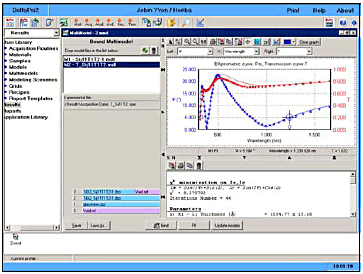
Figure 1. Bound Multimodel Window of DeltaPsi2 Software
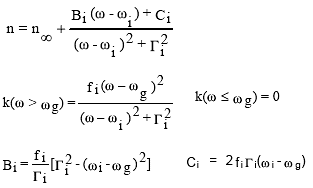
Figure 2. The New Amorphous dispersion formula is a rewriting of original Forouhi-Bloomer formula (Phys. Rev.B, 34, 7018 (1986)).
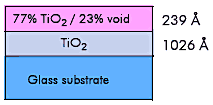
Figure 3. The best model comprises of two layers with the top layer being less dense than the bottom layer. The top layer is calculated by the addition of void using the Effective Medium Approximation.
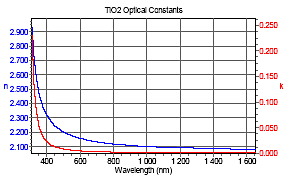
Figure 4. TiO2 Optical Constants
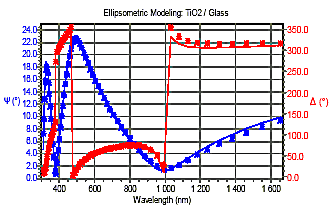
Figure 5. Ellipsometric Modelling TiO2/Glass
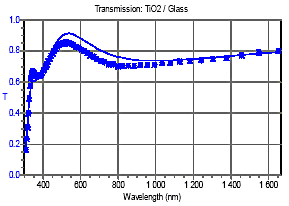
Figure 6. Transmission TiO2/Glass
Characterisation of TiO2 in 8-layer Hi-Lo Index Stack
The analysis was performed with the UVISEL Visible Ellipsometer across the range 310-830 nm at an incident angle of 70°. The best fit model was obtained using a nine-layer model that included a roughness layer at the sample surface. DP2 software allows characterisation of these structures using the special Periodic Structure and Correlated Layer functions that allow modelling of repeating pairs of layers used in MQW or Bragg Reflector structures.
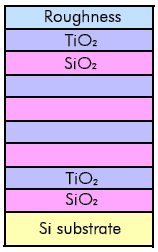
Figure 7. 8-layer Hi-Lo Index Stack
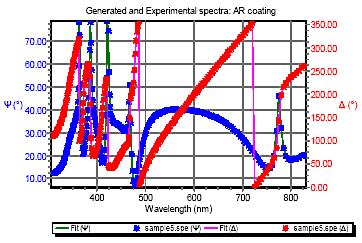
Figure 8. Generated and Experimental Spectra: AR Coating
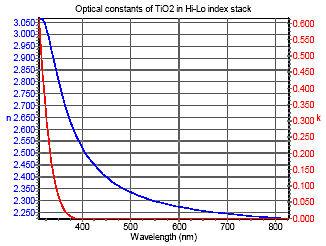
Figure 9. Optical Constants of TiO2 in Hi-Lo Index Stack
Conclusion
The characterisation of TiO2 as a single layer and as an 8-layer dielectric stack was successfully carried out with the UVISEL Spectroscopic Phase Modulated Ellipsometer. Accurate and simultaneous determination of thickness and optical properties have been performed in the NIR/Visible range. Similar analyses have been applied to other high-k material such as Ta2O5 / glass, Al2O3 / 3*{A2O3/a-Si} / GaAs, SiO2 / 2*{HfO2 / SiO2} / glass.

This information has been sourced, reviewed and adapted from materials provided by HORIBA.
For more information on this source, please visit HORIBA.